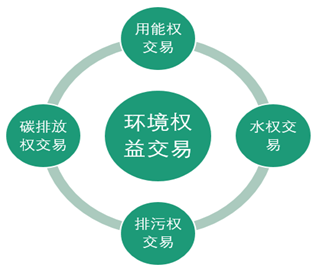Yan Lei: The national carbon market from the perspective of carbon neutrality
At the end of June this year, the national carbon emission trading market will start operating, which will surpass the European Union and become the world's largest carbon market.
In this context, the All-China Environment FederationCarbon reductionYan Lei, leader of the standard working group and director of carbon trading of Beijing Green Puhui Network Technology Co., Ltd., in the "2021 (19th) water industryStrategic ForumThe theme of "National Carbon Market from the Perspective of Carbon Neutrality" was shared.

Yan Lei
1. The origin of carbon neutrality
Since industrialization, human society has developed rapidly, and in just over 200 years, the fossil fuels deposited by the earth for hundreds of millions of years have been extracted and burned, and various greenhouse gases emitted have led to the rise of global temperature, and the greenhouse effect is also making human beings face irreparable damage to the earth's ecosystem. Since the 90s of the last century, the world has recognized the seriousness of the climate problem, and launched international climate negotiations between countries under the framework of the United Nations, which has gradually formed the United Nations Framework Convention on Climate Change, the Kyoto Protocol and the Paris Agreement and other international binding documents on climate change, and has always adhered to the principle of common but differentiated responsibilities to deal with climate change.
Under the constraints of the above international agreements, all countries in the world, whether developed or developing, need to reduce greenhouse gas emissions, and developed countries need to bear more responsibility for reducing greenhouse gas emissions because of the historical cumulative emissions. The 1997 Kyoto Protocol quantified greenhouse gas emission reductions in developed countries, and there were no mandatory constraints for developing countries. In the subsequent international negotiations on climate change, there were three negotiating camps, including the European Union, umbrella countries (the United States, Canada, Japan, Australia and New Zealand) and the "China+77" group, and China is also facing increasing pressure to reduce emissions internationally.
In 2015, 175 countries around the world signed the Paris Agreement, which clearly stated that the average warming of the earth should be limited to 2 degrees Celsius and strive to be within 1.5 degrees Celsius within this century, and for this reason, each country should submit a new nationally determined contribution every five years; A global inventory is carried out every 5 years, a quantifiable assessment of countries is made, and so on. As one of the signatories, China has in fact pledged in its Nationally Determined Contribution (NDC) to peak carbon emissions around 2030.
On September 22, 2020, President Xi Jinping announced at the General Debate of the 75th Session of the United Nations General Assembly that China will increase its nationally determined contributions and take stronger measures to peak carbon dioxide emissions before 2030 and achieve carbon neutrality by 2060. China's pledge to achieve carbon neutrality is much shorter than the time taken by developed countries. This fully reflects China's efforts to respond to climate change, demonstrates China's firm determination to actively respond to climate change and take a green and low-carbon development path, and also reflects China's initiative to shoulder international responsibilities in response to climate change and promote the building of a community with a shared future for mankind, injecting strong political impetus into the process of global climate governance.
The 2021 Central Economic Work Conference planned eight key tasks, the last of which is to do a good job in carbon peaking and carbon neutrality, launch the national carbon trading market, and improve the carbon sink capacity of the ecosystem. The national carbon emission trading is a policy-based market-based tool to control greenhouse gas emissions, and it is also one of the environmental rights and interests trading products under the green financial system.

Environmental rights and interests transactions
Second, carbon trading
1) The mechanism of carbon trading
Carbon trading is a cap-and-trade, similar to the food stamps during the planned economy, and the enterprises included in the carbon trading system have a certain annual emission quota. For example, two high-emitting enterprises, A and B, have an initial quota of 1 million tons a year, and after a year of operation, enterprise A emits 1.1 million tons, which is over-emission and needs to purchase a shortage of quotas; Company B emits 900,000 tons, which is a reduction in emissions, and the surplus allowance can be sold, and Company B can trade to meet their needs. The Carbon Emission Exchange or the Environmental Exchange provides a trading platform to provide matching services for buyers and sellers, realize online and offline transactions, and collect corresponding transaction commissions.

The operation mechanism of carbon trading
碳交易可以通过市场使碳排放权的稀缺价值得以充分挖掘,使减排主体能够在信息更加对称的机制下对减排的投资收益予以决策,也可以最终使得不同地区、不同行业的Carbon reduction成本趋于均等化、全社会Energy saving and emission reductionCost minimization. This is the reason why carbon trading can be implemented so quickly.
2) Global carbon market
From a global point of view, the carbon market has developed rapidly, the earliest carbon market in the European Union, and the EU carbon market has entered the fourth stage, with a total allowance of 1.7-1.8 billion tons; The North American carbon market first appeared in California, nine states in the northeast of the United States have also implemented carbon trading for the power industry, and the Canadian province of Quebec also has its own carbon market, and the two markets of California and Quebec have been connected to form a transnational carbon market; The earliest carbon markets in Asia appeared in Tokyo and Saitama Prefecture in Japan, and the best ones are South Korea, which has officially launched its own national carbon market on January 1, 2015. As early as 2011, the National Development and Reform Commission (NDRC) promoted seven provinces and cities, including Beijing, Tianjin, Shanghai, Chongqing, Hubei, Guangdong and Shenzhen, to carry out pilot carbon emission trading. In 2016, the Fujian carbon market was launched. So far, the total volume of transactions in the pilot carbon market has reached more than 400 million tons, with a transaction value of more than 10 billion yuan.
Enterprises in low-cost areas want to sell at a higher price, and high-cost regions are willing to buy allowances outside the zone at a price lower than the cost of emission reduction, and from this point of view, a larger-scale carbon market at the transnational or intercontinental level is possible. In fact, greenhouse gases like carbon dioxide are very stable, and the greenhouse effect is the same everywhere in the world, so in terms of physical properties, carbon markets in different regions can also be connected. At present, California and Quebec have been interconnected, the European Union and Switzerland have also been connected, China, Japan and South Korea are also negotiating, at present, 53 countries and regions around the world have carbon pricing systems, and some regions are or plan to implement carbon trading systems, and the construction of the global carbon market will continue to accelerate in the future.
3) The current status and progress of the domestic carbon market
事实上,我国已经开展了近10年碳排放权交易市场的探索,经历了起步到不断发展完善的过程。Yan Lei现场展示了国内8大试点市场配额交易价格,“价格更多反映了地区的边际减排成本,边际减排成本越高,价格越高;又因为它是人为碳市场,从价格就可以看出政策的严格程度。”Yan Lei表示,价格最高的是北京,除了北京地区边际减排成本高以外,北京政策更为严厉,有上位法做支撑(北京人大立法),不配合的企业经过罚款之后都会拿出专门的预算完成Carbon reduction的履约。







